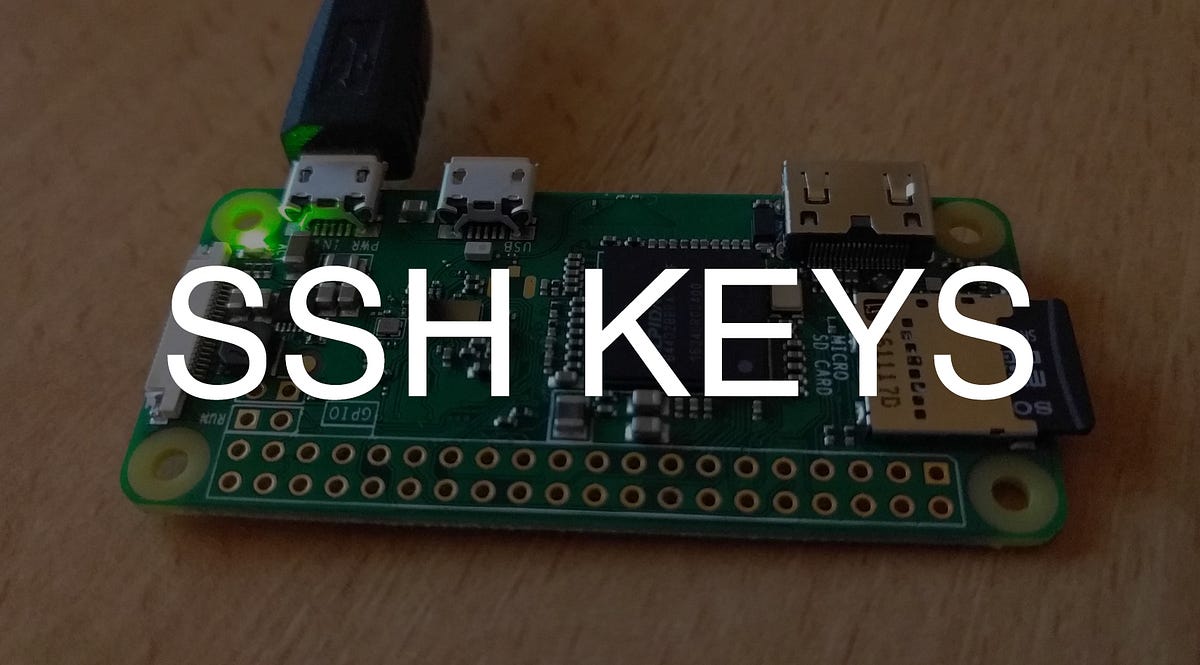Best Ways To Securely Connect Remote IoT P2P SSH On Raspberry Pi
So here's the deal, connecting your IoT devices securely over SSH on a Raspberry Pi can be a game-changer for your projects. Imagine setting up a remote control system that works like a charm without compromising your data. It’s not just about convenience—it’s about protecting your privacy and ensuring your devices stay safe from unwanted visitors. Let’s dive in and explore how you can make this happen.
Now, listen up. The best securely connect remote IoT P2P SSH Raspberry Pi setup isn’t something you can just throw together without thinking. It requires a bit of planning, some technical know-how, and a solid understanding of security best practices. We’re talking about creating a network that’s not only efficient but also bulletproof against hackers and cyber threats.
In this article, we’ll walk you through everything you need to know to get your Raspberry Pi connected securely. From configuring SSH settings to implementing advanced security measures, we’ve got you covered. Let’s get started and turn your Raspberry Pi into a powerhouse for secure IoT communication.
Read also:Notti Osama Video Dead The Truth Behind The Headlines
Understanding the Basics of IoT and Raspberry Pi
First things first, let's break down what IoT and Raspberry Pi mean for your setup. IoT, or the Internet of Things, is all about connecting everyday devices to the internet so they can communicate with each other. Think smart fridges, thermostats, and even doorbells that talk to your phone. Now, throw in a Raspberry Pi, which is basically a tiny computer, and you’ve got a powerful combo for creating custom IoT solutions.
When you're working with Raspberry Pi, you're dealing with a device that’s super versatile and can handle a wide range of tasks. Whether you’re building a home automation system or setting up a remote weather station, Raspberry Pi has got your back. But here’s the thing—it’s not just about setting up the hardware; it’s about making sure everything stays secure.
Why Security Matters in IoT
Okay, let’s talk about the elephant in the room—security. When you connect your IoT devices to the internet, you’re opening them up to potential threats. Hackers can exploit vulnerabilities in your setup to gain access to your data or even take control of your devices. That’s why it’s crucial to prioritize security when you’re working with IoT.
For instance, imagine a scenario where someone gains unauthorized access to your smart home system. They could turn off your lights, unlock your doors, or worse, access sensitive information. By securing your IoT devices with SSH on Raspberry Pi, you’re adding an extra layer of protection that makes it much harder for attackers to get in.
Setting Up SSH on Raspberry Pi
Alright, let’s get down to business. Setting up SSH on your Raspberry Pi is the first step toward creating a secure IoT network. SSH, or Secure Shell, is a protocol that allows you to remotely access and manage your Raspberry Pi over a network. It’s like having a virtual key that lets you unlock your device from anywhere.
Here’s how you can set it up:
Read also:Amanda Lindhout Married The Untold Story Of Love Resilience And Transformation
- Enable SSH on your Raspberry Pi by navigating to the Raspberry Pi Configuration tool.
- Go to the Interfaces tab and select Enable for SSH.
- Reboot your Raspberry Pi to apply the changes.
- Once SSH is enabled, you can connect to your Raspberry Pi using an SSH client like PuTTY or Terminal.
Remember, enabling SSH is just the beginning. To truly secure your connection, you’ll need to take additional steps, which we’ll cover in the next section.
Generating SSH Keys for Enhanced Security
Generating SSH keys is like giving your Raspberry Pi a digital fingerprint that only you can access. Instead of relying on passwords, which can be easily guessed or hacked, SSH keys provide a more secure way to authenticate your connections.
Here’s how you can generate SSH keys:
- Open your terminal and run the command `ssh-keygen` to generate a new key pair.
- Follow the prompts to specify where you want to save the key and whether you want to add a passphrase for extra security.
- Once the keys are generated, copy the public key to your Raspberry Pi using the `ssh-copy-id` command.
By using SSH keys, you’re making it much harder for unauthorized users to gain access to your Raspberry Pi. Plus, it saves you the hassle of remembering complex passwords.
Configuring SSH for Secure Connections
Now that you’ve got SSH up and running, it’s time to configure it for maximum security. This involves tweaking some settings to ensure that your connections are as safe as possible. Think of it like fortifying the walls of a castle—you want to make sure there are no weak spots that attackers can exploit.
Here are some key configurations you should consider:
- Disable password authentication and only allow key-based authentication.
- Change the default SSH port from 22 to something less common to avoid automated attacks.
- Limit access to specific users or IP addresses to reduce the risk of unauthorized access.
By tweaking these settings, you’re making it much harder for attackers to gain access to your Raspberry Pi. It’s like putting a lock on your front door and making sure only you have the key.
Implementing Firewall Rules
Firewalls are like digital bouncers that control who gets in and out of your network. By implementing firewall rules, you can further enhance the security of your SSH connections. Here’s how you can set it up:
- Install a firewall tool like UFW (Uncomplicated Firewall) on your Raspberry Pi.
- Allow incoming connections on the SSH port you’ve configured.
- Deny all other incoming connections to minimize the risk of attacks.
With a firewall in place, you’re adding another layer of protection to your Raspberry Pi. It’s like having a security guard at the door, making sure only the right people get in.
Best Practices for Securing IoT Devices
While securing your SSH connections is a great start, there are other best practices you should follow to ensure the overall security of your IoT devices. These practices go beyond just setting up SSH and focus on creating a comprehensive security strategy.
Here are some tips:
- Keep your software and firmware up to date to patch any vulnerabilities.
- Use strong, unique passwords for all your devices and avoid using default credentials.
- Segment your network to isolate IoT devices from other critical systems.
By following these best practices, you’re creating a secure environment where your IoT devices can thrive without putting your data at risk.
Monitoring and Logging Connections
Monitoring and logging your SSH connections is like keeping an eye on your security cameras. It allows you to detect any suspicious activity and take action before it becomes a problem. Here’s how you can set it up:
- Enable logging for SSH connections in your Raspberry Pi’s configuration file.
- Regularly review the logs to identify any unauthorized access attempts.
- Set up alerts to notify you of any suspicious activity in real-time.
With monitoring and logging in place, you’re always aware of what’s happening in your network. It’s like having a security team on standby, ready to respond to any threats.
Exploring P2P Solutions for IoT
P2P, or peer-to-peer, solutions offer a unique way to connect your IoT devices without relying on a central server. This can be especially useful for creating decentralized networks that are more resilient and secure. By leveraging P2P technology, you can reduce the risk of a single point of failure and create a more robust system.
Here’s how you can implement P2P solutions for your IoT devices:
- Use P2P protocols like WebRTC or libp2p to establish direct connections between devices.
- Encrypt all data transmitted between devices to ensure privacy and security.
- Implement authentication mechanisms to verify the identity of connected devices.
By exploring P2P solutions, you’re opening up new possibilities for your IoT projects. It’s like creating a network that’s not only secure but also more efficient and scalable.
Choosing the Right Tools for Your Setup
When it comes to setting up a secure IoT network, choosing the right tools can make all the difference. From SSH clients to firewall tools, there are plenty of options to choose from. Here’s a quick rundown of some of the best tools available:
- SSH clients like PuTTY or Terminal for managing your Raspberry Pi remotely.
- Firewall tools like UFW or iptables for controlling network traffic.
- Monitoring tools like fail2ban or logwatch for detecting and responding to threats.
By selecting the right tools for your setup, you’re ensuring that your IoT network is as secure and efficient as possible.
Advanced Security Measures for Raspberry Pi
If you’re looking to take your security to the next level, there are some advanced measures you can implement to further protect your Raspberry Pi. These measures go beyond the basics and require a bit more technical expertise, but they’re worth it if you want to create a truly secure setup.
Here are some ideas:
- Implement two-factor authentication (2FA) for added security.
- Use intrusion detection systems (IDS) to monitor for suspicious activity.
- Encrypt your data at rest to protect it in case of physical access.
By implementing these advanced security measures, you’re creating a fortress that’s nearly impossible to penetrate. It’s like having a team of security experts guarding your Raspberry Pi 24/7.
Staying Up-to-Date with Security Trends
Security is an ever-evolving field, and staying up-to-date with the latest trends is crucial for maintaining a secure IoT network. This involves keeping an eye on emerging threats, new technologies, and best practices in the industry. By staying informed, you can adapt your security strategy to address any new challenges that arise.
Here’s how you can stay up-to-date:
- Follow security blogs and forums to learn about the latest developments.
- Attend conferences and webinars to gain insights from industry experts.
- Join online communities to share knowledge and learn from others.
By staying informed, you’re ensuring that your IoT network remains secure and resilient in the face of evolving threats.
Conclusion and Call to Action
So there you have it, folks. Setting up a secure IoT network using SSH on Raspberry Pi is not only possible but also highly recommended. By following the steps we’ve outlined, you can create a setup that’s both efficient and secure, protecting your data and devices from potential threats.
Remember, security isn’t a one-time thing—it’s an ongoing process. Keep updating your software, monitoring your connections, and staying informed about the latest trends to ensure that your IoT network remains safe and secure.
Now it’s your turn. Take action by implementing these tips in your own projects. Share your experiences in the comments below, and don’t forget to check out our other articles for more tips and tricks on securing your IoT devices. Together, we can create a safer, more connected world.
Table of Contents
- Understanding the Basics of IoT and Raspberry Pi
- Why Security Matters in IoT
- Setting Up SSH on Raspberry Pi
- Generating SSH Keys for Enhanced Security
- Configuring SSH for Secure Connections
- Implementing Firewall Rules
- Best Practices for Securing IoT Devices
- Monitoring and Logging Connections
- Exploring P2P Solutions for IoT
- Choosing the Right Tools for Your Setup
- Advanced Security Measures for Raspberry Pi
- Staying Up-to-Date with Security Trends
Article Recommendations


